The Dell S5232F-ON is a switch that we purchased as part of a new series we are doing. As a 32x 100GbE switch, it is actually the port configuration we have regularly deployed in the STH lab for the past few years. Recently, we took a look at the Dell S5148F-ON 48-port 25GbE 6-port 100GbE switch. Although that is now an older generation switch, it is interesting insofar as it was a Cavium XPliant/ Intel Atom C2000 based switch. The Dell S5232F-ON utilizes Broadcom switch chip silicon with an updated Intel Atom C3000 along with some internal layout changes that are very interesting. In this hands-on, we are going to take a look at why.
Dell Networking S5232F-ON Hardware Overview
As we have been doing with server reviews, we are going to split this into an external then an internal hardware overview.
Update: If you want to check out the video overview of this switch, you can find a link above in the embed. As always, we suggest opening this video in its own YouTube tab, window, or app for the best experience.
Dell S5232F-ON External Hardware Overview
First, the Dell EMC Networking S5232F-ON is a 1U platform that has a fairly standard port layout. As a quick note, (not pictured here) Dell has 1U rails for this switch that we generally would recommend. The switch has a lot of weight in the rear with the large power supplies.
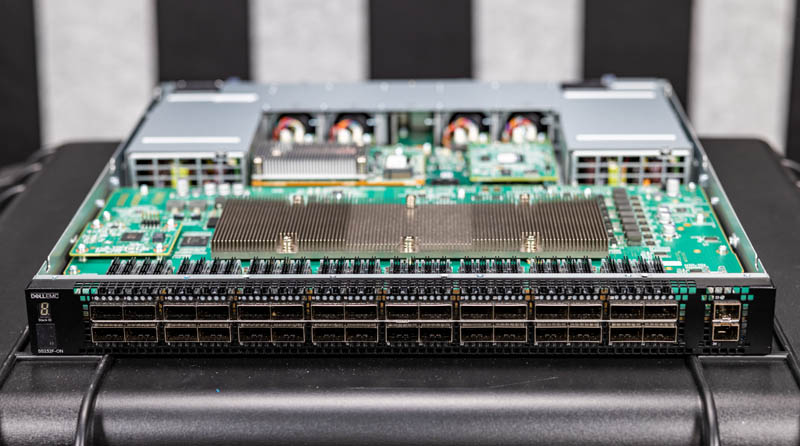
Starting at the front of the switch, on the left, we have the stack ID LCD as well as status lights.
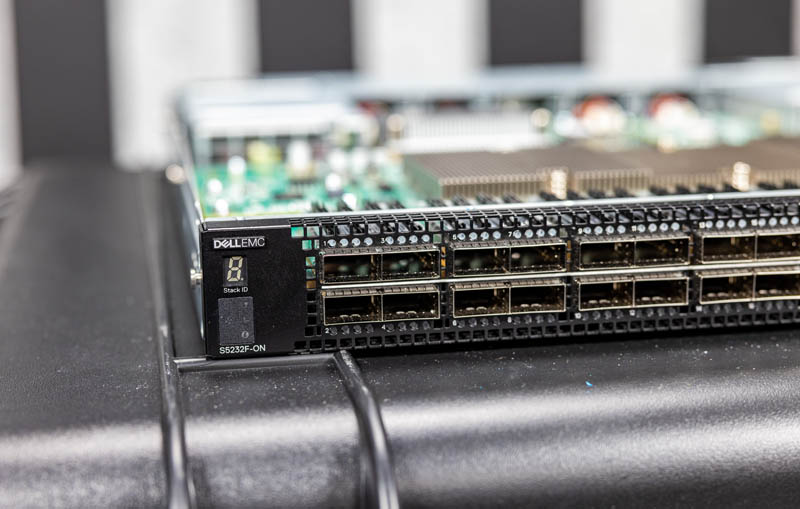
In the middle of the switch, we get 32x QSFP28 ports. Each provides 100GbE support. Q in QSFP28 stands for quad, so you can break out 1x QSFP28 to 4x SFP28 to get four 25GbE ports per 100GbE port. The S5232F supports up to 124 ports of break out to 25GbE. That means that one cannot get 32×4=128 25GbE on this switch. Most will not care, but if you really want 128x 25GbE ports, the S5295F-ON is able to do this. Similarly, one can get 50GbE by splitting a 100GbE port in two and that works across the ports for 64x 50GbE ports. One can run 10GbE and get up to 126 ports.
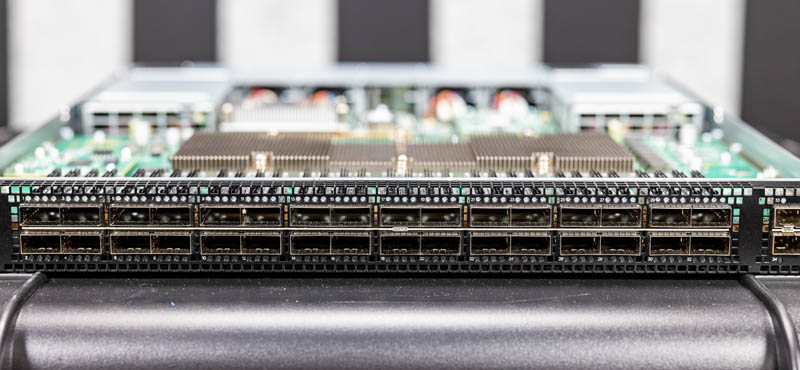
Speaking of 10GbE, there are two 10GbE SFP+ ports that would typically be used for higher-speed management duties on a switch like this.
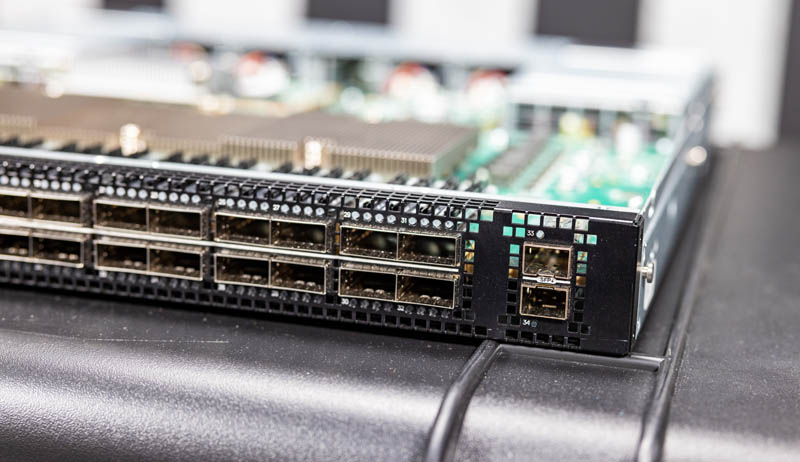
Moving to the rear of the switch, we get a Dell layout we have seen before.
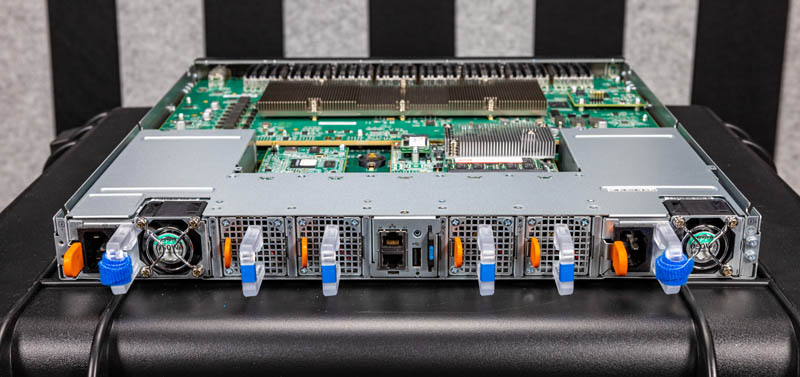
The four dual-fan modules are hot-swappable, a standard feature on a switch like this.
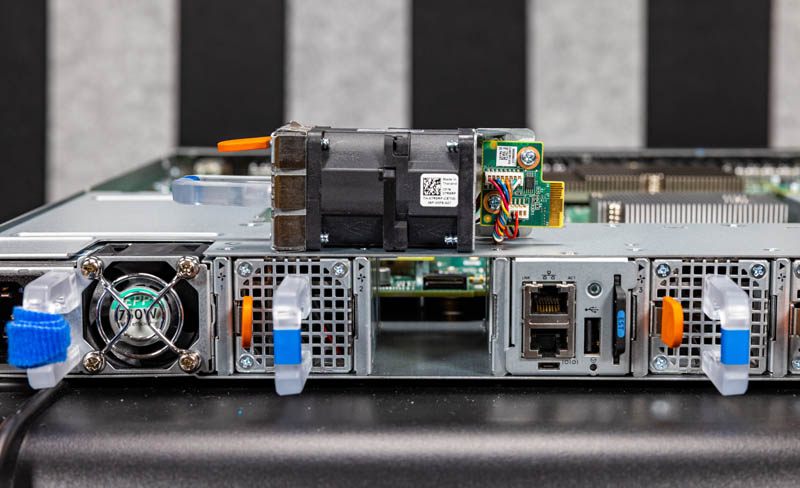
In the center, we have the management block. This has a serial console port, a USB port, the service tag, and the out-of-band management port. How Dell implements this is a bit different in this generation, but the placement is the same as we saw in the previous generation. A key challenge is that with the service tag and USB port in the middle of the chassis, accessing them while the switch is racked can be very difficult since the switch is often significantly less deep than a server or storage machine these days.
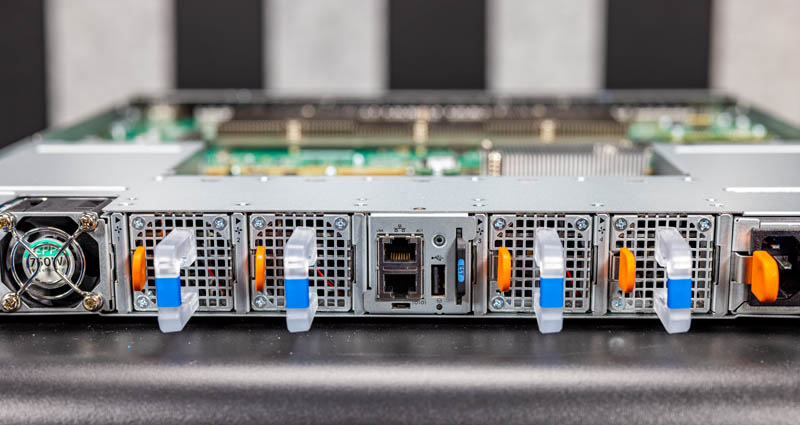
As for power supplies, we get two 750W 80Plus platinum PSUs. One can see these are PSU to port designs as shown by the little blue airflow arrow. Something that is interesting is that the S5296F-ON based on the same switch chip uses 1.1kW PSUs.
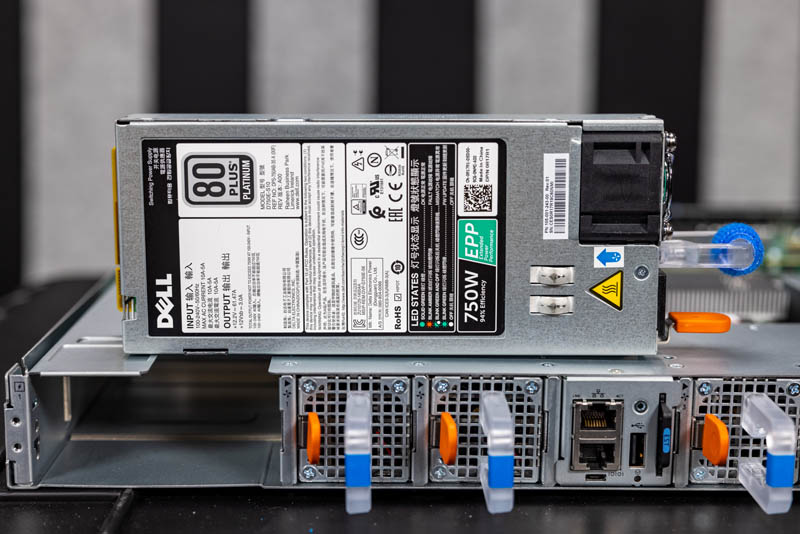
Overall, this is a fairly standard setup for a 100GbE 1U switch these days.
Next, let us get to our internal overview of the switch.

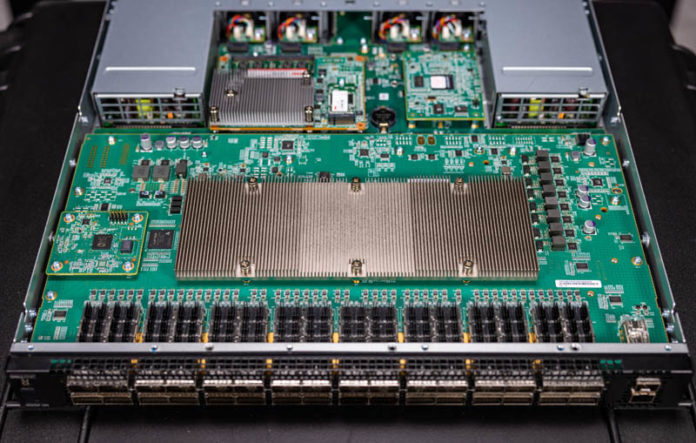



I love that you do these.
Interesting article – thank you. I was a bit confused by the 124x 25G part, since the switch spec sheet specifically states support for 128x 25G.
Esteben:
Max 25GbE density 124 (QSFP28 breakout)
Source: S5200-ON Spec Sheet
It is a typo in the table. In the text in the spec sheet it says:
In addition to 100GbE Spine/Leaf deployments, the S5232F-ON can also be used in high density deployments using breakout cables to achieve up to 128 10GbE or 128 25GbE ports.
Also in older spec sheets it lists the same 128 25GbE port.
We always go by spec tables if there is no clear abundance of documentation otherwise. The 10GbE ports are listed as 124 in the table and 128 in the text as well. Dell has had years to produce correct documentation and we have to assume the table is correct since that is what most people read and has the most specs.
I’d like to see the 96 port version you’ve mentioned in the video.
Did you by any chance get serial-over-lan to work on the BMC. I’ve tried this at one point, bit never succeeded. Also, Dell support and others further in the organization was not of much help. It seems like something that should just work.
Did you get sonic into a working state? One of my colleagues didn’t find it easy to get ports configured with the open version and gave up in the end.